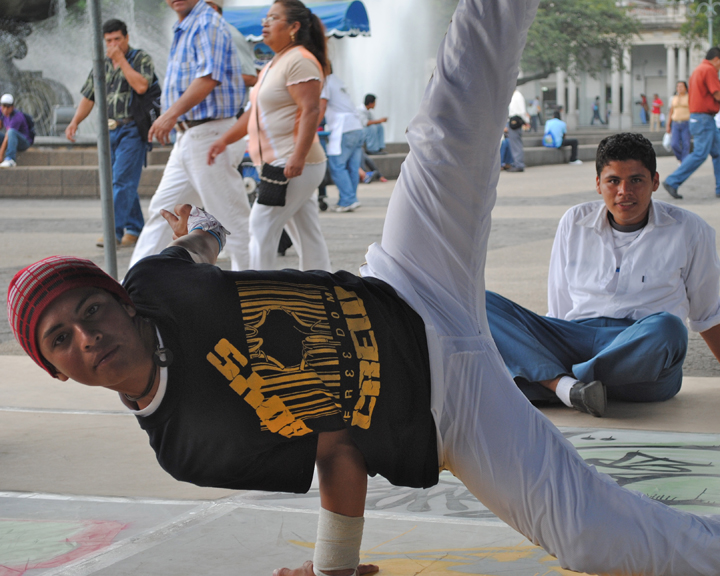

Building peace through art in Guatemala

“Why don’t we do something against all this violence? Why don’t we listen? Why don’t we realize that we’re all weeping in silence?” demands artist Julio Barrutia about his homeland, Guatemala, which has been plagued by a staggering rise in violence since the end of the country’s three-decades long civil war.
Pervasive poverty, widely-available weapons and weak police and judicial systems have given Guatemala one of the highest violent crime rates in Latin America: last year, some 55 murders a week were reported in Guatemala City alone. Youth are particularly affected by violent crimes: the overwhelming majority of both victims and victimizers are young people aged 18 to 35.
“They have us up against the wall, we’re afraid to leave our homes because of the violence. And it shouldn’t be like this,” says Barrutia, director of the cultural organization “Ixtab Alob”.
So Barrutia is fighting back. Supported by the MDG-F, “Ixtab Alob” and other art institutions are using music, theater and dance to draw youth away from the lure of gangs and violence.
“Unfortunately, for many young people the word ‘youth’ means very little,” says actor and radio host Fabio Díaz, who teaches workshops at the University of San Carlos’s College of Arts, also supported by the MDG-F’s programme. Díaz blames the extreme scarcity of opportunities and resources for young people in a country where 70% of the population is under 30.
Aldor Divassi, director of the music school Alarte, another programme beneficiary, agrees. “That’s where the danger is: because youth have nowhere to channel all their energy, they build up a lot of anger and ultimately they become violent.” Divassi and Barrutia complain that young people in Guatemala are bombarded with negative images from mass media that create stereotypes, which can be confusing, isolating and destructive.
Bringing art to young people creates dialogue, one of the many objectives of the "Consolidating Peace in Guatemala through Violence Prevention and Conflict Management" programme, which is funded by the MDG Achievement Fund and involves six United Nations agencies, five government institutions and local organizations.
With initiatives to facilitate knowledge sharing, create open spaces for citizen participation and promote the exchange of ideas, the Joint Programme is helping to develop policies that combat violence against youth, women and children, strengthen the rule of law, improve safety and reduce conflict. In addition to encouraging youth involvement in the arts, the MDG-F is supporting a pilot program called “Safe Cities” in three municipalities, an early warning system and other initiatives.
“It’s not about pointing fingers at the violence of a single individual, it’s about promoting a change in each one of us, ” says Maria Velázquez, a dance student at the University of San Carlos College of Arts. "It's a very nice experience to see the excitement of people when I dance. It's like relaxing and going to another world. I dance because it’s a good way to express myself -- on stage you can express almost anything, it’s a way to feel free, especially if it’s done with passion. "
Click here to watch a video combating the spread of firearms in Guatemala, produced with MDG-F support.